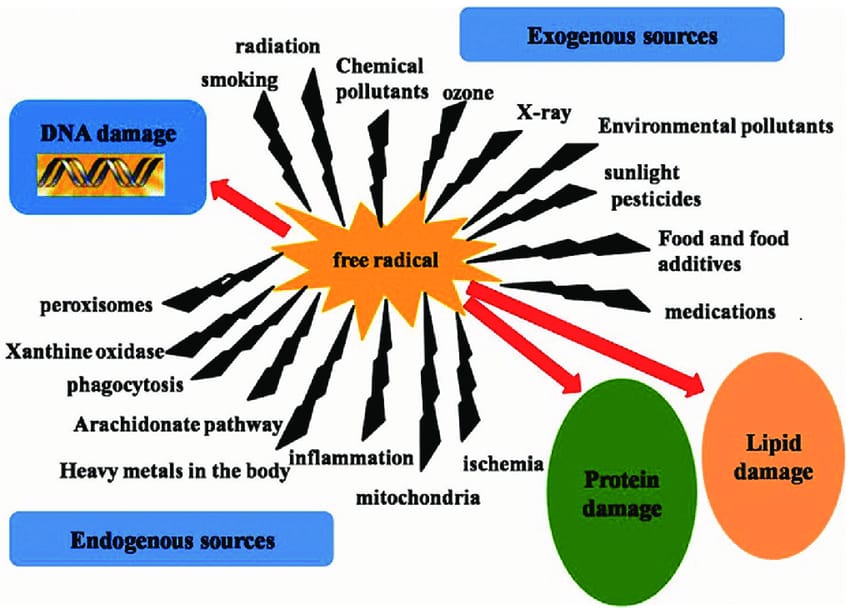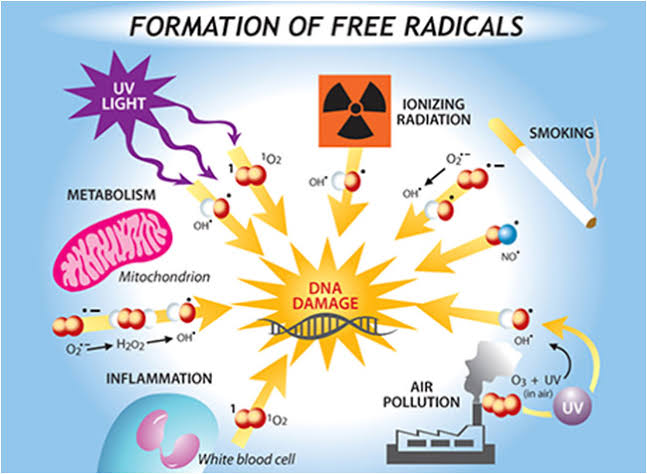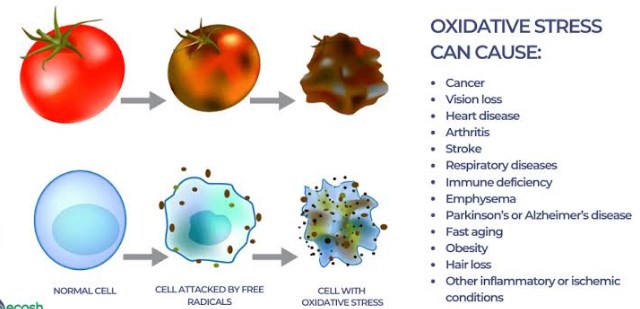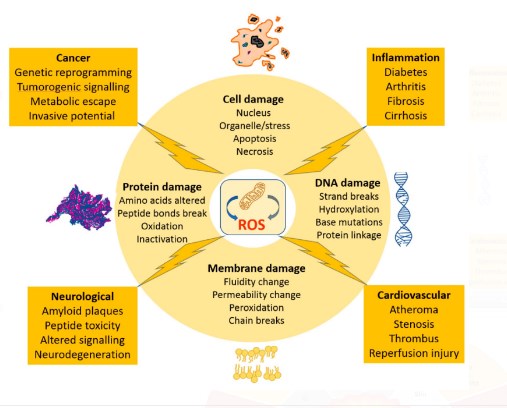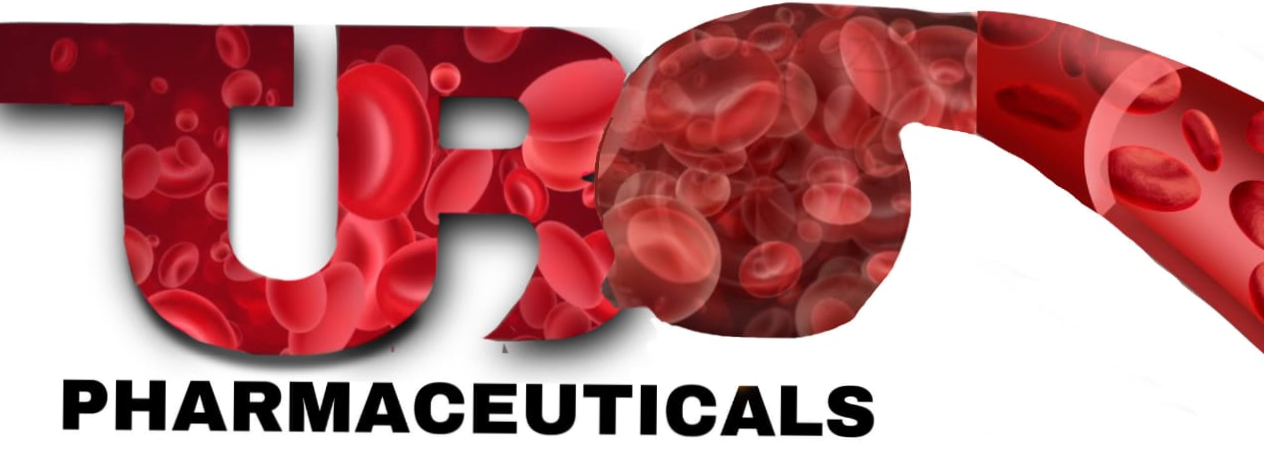- 9212620977 call us
- turbopharmaceuticals@gmail.com Mail us
Free radicals
A free radical can be defined as any molecular species capable of independent existence that contains an unpaired electron in an atomic orbital. The presence of an unpaired electron results in certain common properties that are shared by most radicals. Many radicals are unstable and highly reactive. They can either donate an electron to or accept an electron from other molecules, therefore behaving as oxidants or reductants. The most important oxygen-containing free radicals in many disease states are hydroxyl radical, superoxide anion radical, hydrogen peroxide, oxygen singlet, hypochlorite, nitric oxide radical, and peroxynitrite radical. These are highly reactive species, capable in the nucleus, and in the membranes of cells of damaging.
The recent growth in the knowledge of free radicals and reactive oxygen species (ROS) in biology is producing a medical revolution that promises a new age of health and disease management.It is ironic that oxygen, an element indispensable for life, under certain situations has deleterious effects on the human body. Most of the potentially harmful effects of oxygen are due to the formation and activity of a number of chemical compounds, known as ROS, which have a tendency to donate oxygen to other substances. Free radicals and antioxidants have become commonly used terms in modern discussions of disease mechanisms. Researches have established that the reason behind most of the auto immune disease like Daibetes, Cardiovascular Disease, Neurodegenerative disease, Cancer etc are FREE Radicals which form vicious cycle in our body for destruction.
